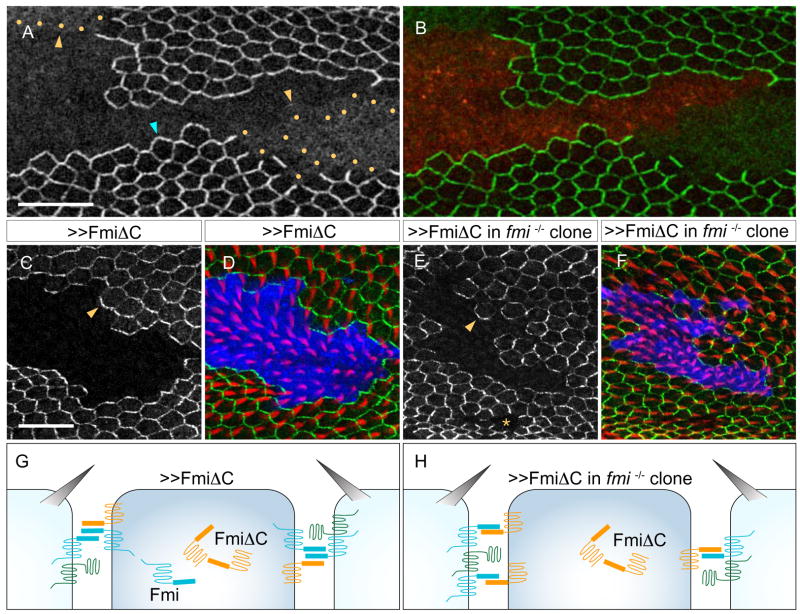Figure 4. Flamingo acts homophilically.
(A–B) A Fmi overexpression clone and its twin-spot that is mutant for fmiE45 (MARCM). Fmi overexpressing clone positively marked by DsRed (red in [B]) and excluding FzGFP expression. FzGFP in the fmiE45 clone ([A]; green in [B]; yellow dots outline the fmi clone) fails to localize to the cell membrane and remains largely intracellular (yellow arrowheads), whereas it is recruited from wildtype neighbors (blue arrowhead).
(C–D) FmiΔC overexpression clone, positively marked by DsRed (blue in [D]), and excluding FzGFP expression ([C]; green in [D]), repolarizes neighboring wildtype cells and recruits FzGFP to the clone border (arrowhead). Prehairs stained with phalloidin (red in [D]).
(E–F) FmiΔC overexpression in fmiE45 mutant clone, positively marked by DsRed (blue in [F]), and excluding FzGFP expression ([E]; green in [F]), repolarizes neighboring wildtype cells (arrowhead in [E]). Prehairs stained with phalloidin (red in [F]). Cells homozygous for fmiE45 fail to recruit Fz from neighbors (asterisk in [E]).
(G–H) Schematic of FmiΔC overexpression clone in wildtype (G) and in fmi mutant cells (H).

